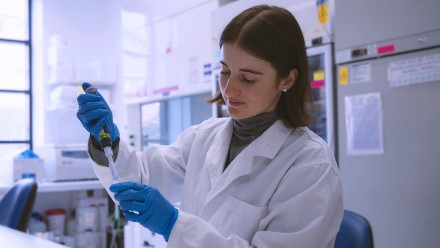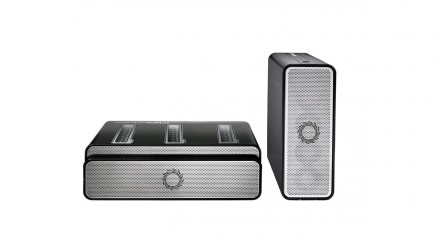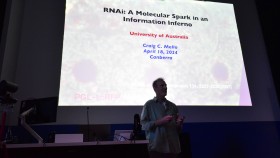PromethION, the largest sequencer from Oxford Nanopore is now at ANU
Fondly named ‘The Hungry Monster’, the PromethION is the newest addition to the fleet of state-of-the-art sequencers at the BRF. This ’Monster’ is expected to become integral to a large number of research projects within ANU and externally to CSIRO and UC, to name a few.
PromethION is the highest-throughput sequencing device from Oxford Nanopore. This highly-scalable instrument can run multiple flow cells independently and deliver terabases of long-read sequence data in real-time. Using the same technology as the popular pocket-size MinION, the PromethION can read native and amplified DNA and RNA, making extremely well-suited for applications such as structural variation, assembly, phasing, DNA and RNA base modifications, full-length transcriptome and isoform detection, to name a few.
The PromethION will push the boundaries for paradigm-shifting research, providing insights on complex genomes and transcriptomes that are unattainable with other sequencing technologies. Moreover, long-read sequencing technology capabilities at ANU will address strategic priorities in delivering research of the highest quality and ensuring that the core disciplines of ANU are ranked alongside the best in the world.
“The PromethION will allow us to study genomes and transcriptomes at unprecedented depth and uncover novel molecular signatures of individual variability and disease." Said Professor Eduardo Eyras, EMBL group leader and expert in computational RNA biology.
“Long-read sequencing techniques opened up possibilities to address basic questions in molecular biology that we couldn't answer before. I am excited to have PromethION on-site, which gives us a substantial volume of data with an affordable running cost for the first time…" Said Dr Rippei Hayashi, group leader of the Transposon defence and animal development at JCSMR. "It is so fast you can get data while you queue up and dine in Grease Monkey at Lonsdale street."
The BRF team happily reports that ‘The Hungry Monster’ has been ‘fed’ for the first time, and the results obtained are impressive. Within mere 6 hours of running, the instrument had collected a whopping 10Gb of data from a single flow cell, with some reads exceeding 100Kb in length! This data will be used to generate an assembly of an iconic Australian species, providing meaningful insights on its biology and aiding conservation efforts.
“Using the new PromethION machine, we have been able to generate high yield, long-read sequence data for de novo genome assembly of the Litchfield rock gecko (Gehyra lapistola), as part of a project on speciation, chromosome evolution, and historical demography of Gehyra from northern Australia. With a higher yield per flow cell than the MinION, and the capacity to run many flow cells simultaneously, the PromethION machine greatly increases the university's capacity to generate long-read sequencing data.” Said Dr Emily Roycroft Postdoctoral Research Fellow in the Moritz Lab at RSB.
With the system all connected and tested, we can now say ‘we are open for business!’
If you are interested in doing Nanopore Sequencing with us or want to know more, email us at brf@anu.edu.au. You can also find more information on our website.















